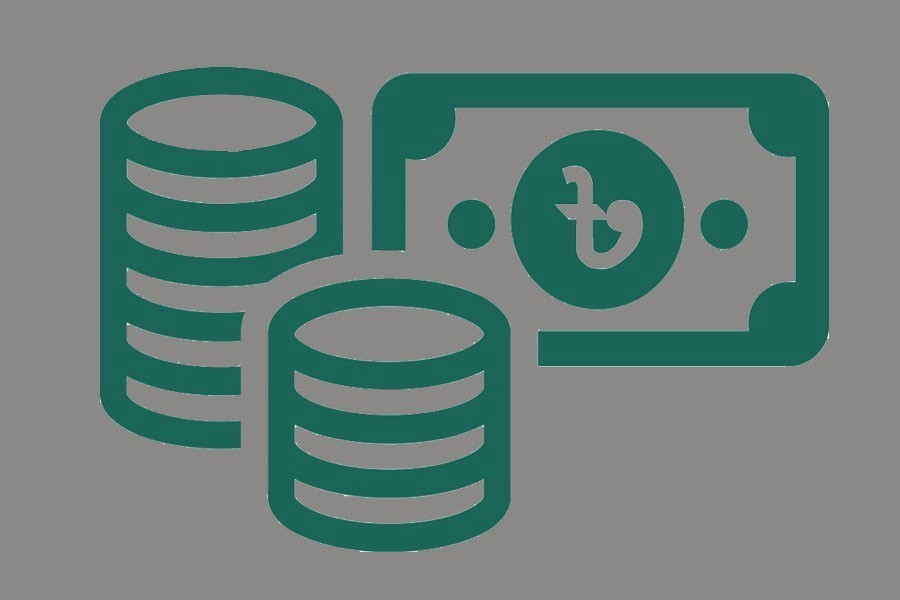The government, apparently, is in a difficult situation as far as its borrowing to meet the budget deficit is concerned. Criticism comes in plenty when it borrows more through the sale of high-yield bearing savings tools as it inflates the burden of interest payments.
The same happens when it wants to be more dependent on banks to meet the resource gap. Here, the government is blamed for crowing out the private sector.
The government has become increasingly dependent on bank borrowing during the past few months to meet the budget deficit. The shortfall in tax revenue receipt has forced it to be so.
However, the development has come in contrast to that of recent years. The government used to meet most part of the deficit through the sale of the savings tools since those were in high demand.
The sale of savings tools, known as sanchaypatras, used to be far more than the annual targets. The inflow of resources from savings tools was so much that the government's net bank borrowing stood in the negative during one particular financial year.
The situation is altogether reverse now. For the past few months, the sale of Sanchaypatras has been on the decline despite their yield rates remaining unchanged. In December last, the net sale of Sanchaypatras was in the negative for the first time in nearly seven years.
In fact, in terms of return, the government's savings tools remain to be the most attractive instruments for savers. Then why are those no more attractive to savers?
The main reason for decline in the sale of savings tools is the government decision to tag a few requirements for the buyers of the same and the hike in tax deducted at source from 5.0 per cent to 10 per cent. The online purchase and mandatory production of tax identification number (TIN) are the conditions that have scared away the fake buyers. Allegations were there that many affluent people used to buy these instruments using fake identities.
Despite the fall in sale of savings tools, the government is still facing criticism for keeping yield rates high. There is no denying that such high yield rates are adding to the financial burden on the government. Moreover, it has been giving rise to distortions in the financial market, particularly when the banks have been asked to keep the highest rate of deposit at 6.0 per cent.
However, a government worth its name cannot be oblivious of the need for safeguarding the interests of small savers, particularly that of old-age pensioners and retirees. These people in their thousands are dependent on the monthly return they receive from sanchaypatras. The government servants are interested in keeping the existing rates in place. So, it is not that easy for the government to reduce the yield rates of its savings tools.
Since the sale of government's savings tools has declined notably, the criticism over payment of higher yield on those is likely to subside for the time being.
However, the alternative source of borrowing for the government---banking industry---has been rather handy, lately. The government has also milked it well; it has borrowed in first seven months of the current fiscal year more than the amount targeted for the whole year.
The so-called crowding-out effect is also not in place, it seems. The demand for funds from the private sector has been at its low ebb in recent years. The private sector credit growth which was once between 15 per cent and 16 per cent has gradually come down to single digit (little over 9.0 per cent) at the end of the first half of the current fiscal year. This, actually, speaks of the current situation with private investment, which has been more or less stagnant for the last few years.
Though businesses have been voicing concern over the high lending rate, their appetite for bank funds has not been particularly strong in recent years. The banks, too, are not in a mood to offer loans easily. One after another scam and presence of toxic loans in huge volumes have made them rather cautious in lending. The banks are found to be more interested in investing in government securities that though safe are less rewarding compared to normal lending.
The government, on its part, needs to reduce its level of borrowing, be it through savings tools or bank borrowing. High borrowing does create a burden, in terms of interest payments. Since the government is facing a substantial decline in tax receipts, it needs to downsize its expenditure to keep the deficit at a manageable level.


